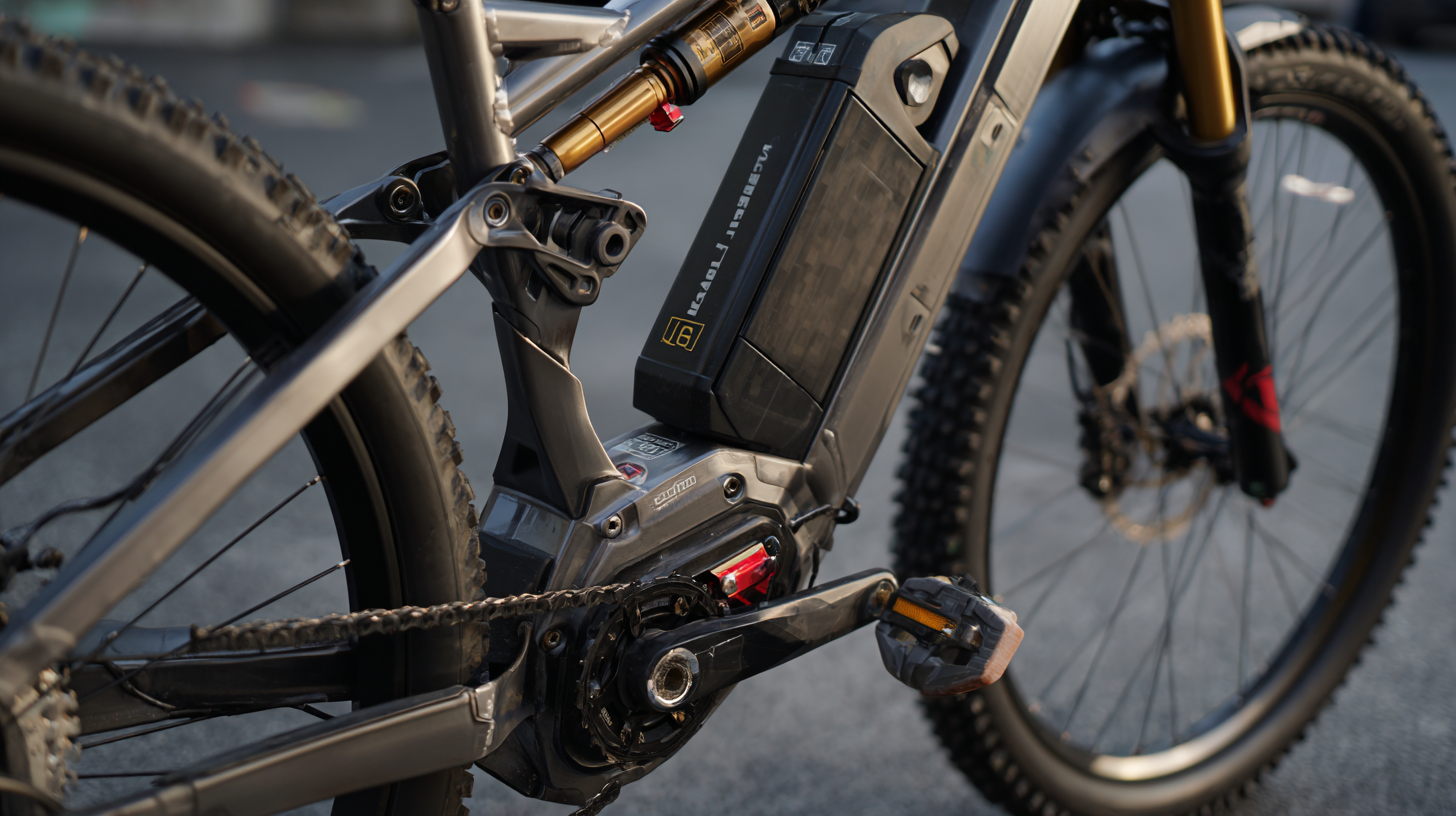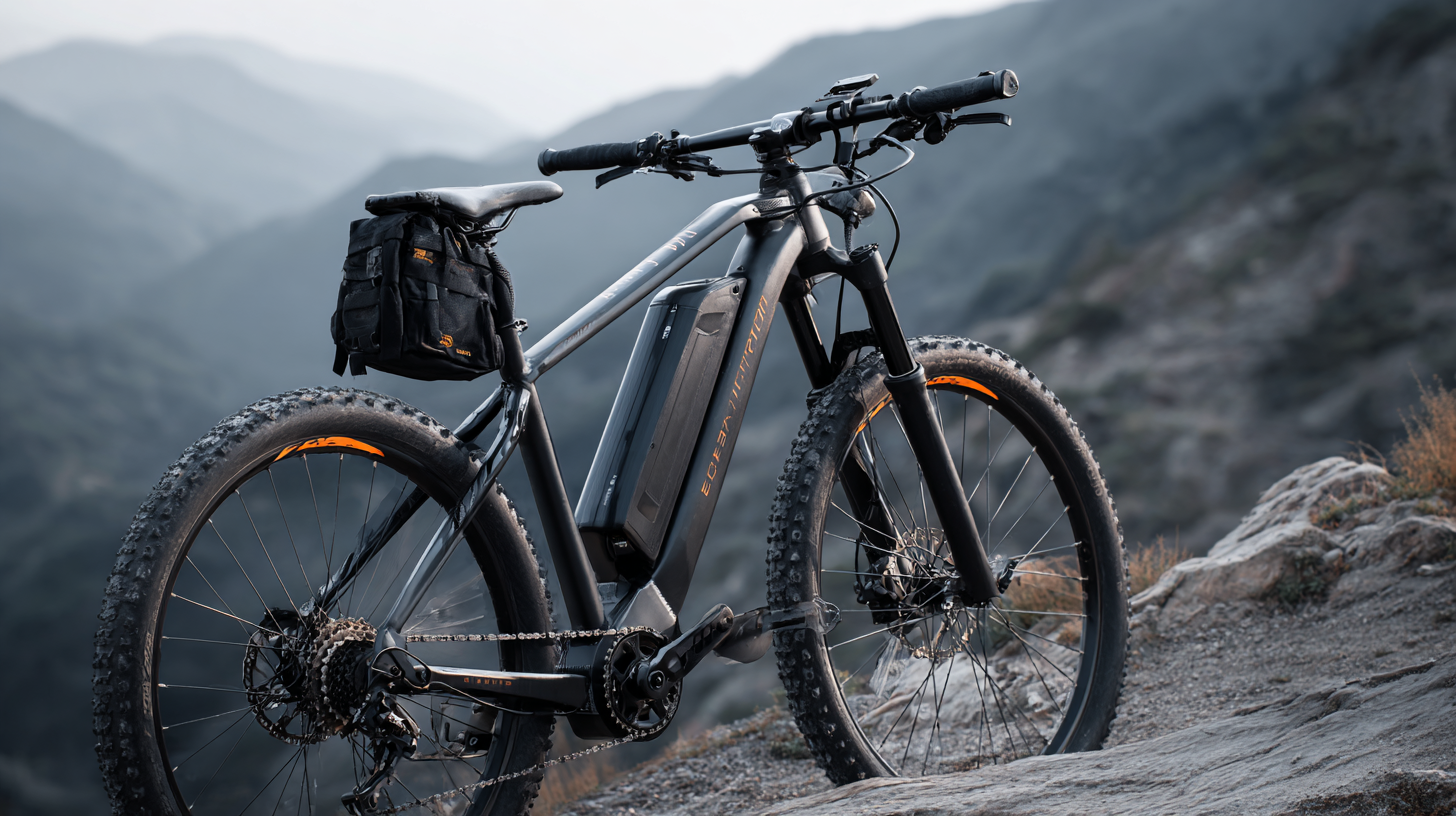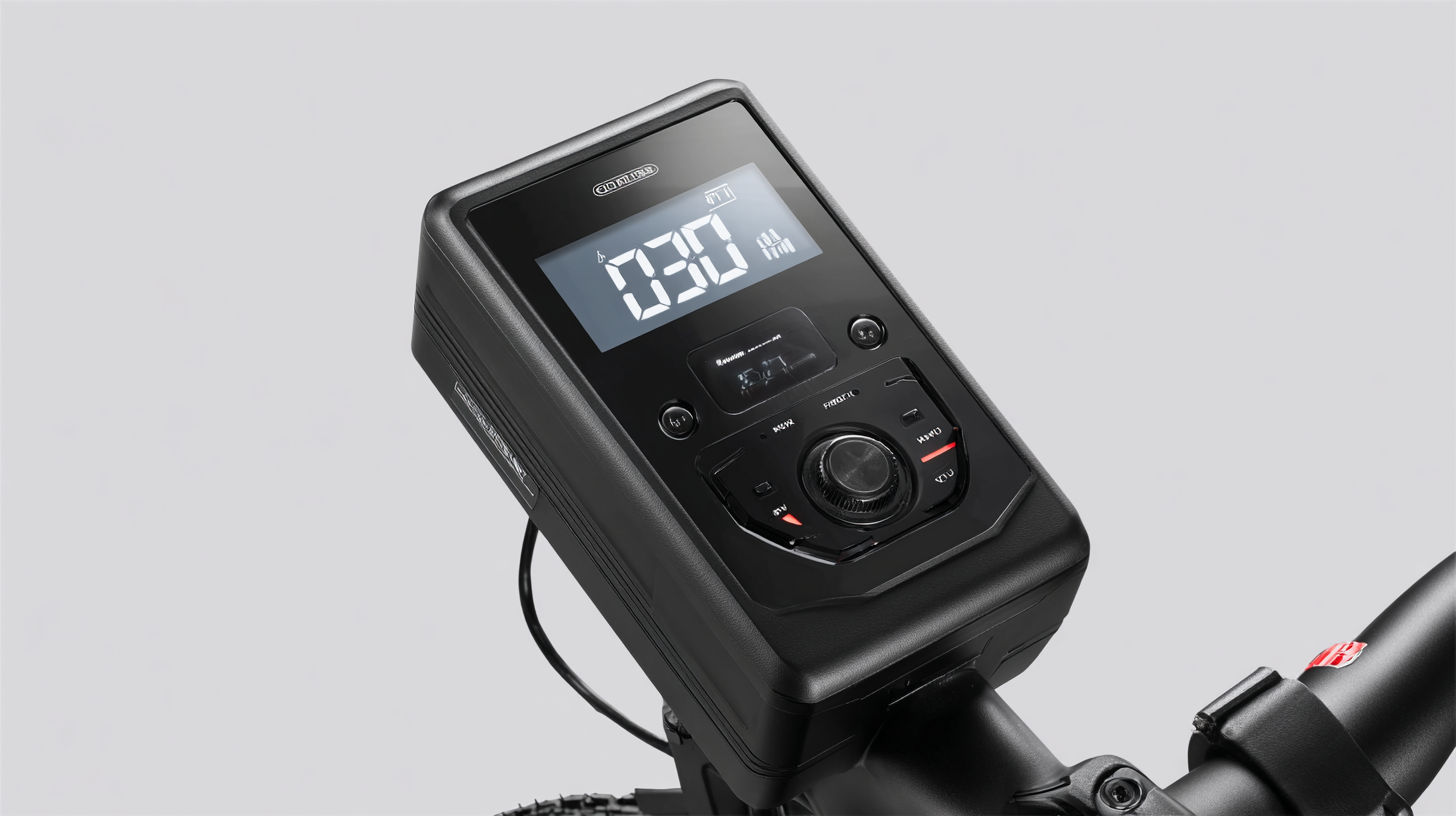Choosing the right E Bike Li Ion Battery is crucial for enhancing both performance and longevity of electric bicycles. With the global electric bike market expected to reach $38.3 billion by 2025, a significant factor in this growth is the advancement of battery technologies, particularly lithium-ion options, which dominate the market due to their high energy density and efficiency. Reports indicate that a well-chosen Li Ion battery can increase an e-bike's range by up to 30%, making it essential for cyclists to consider factors such as capacity, discharge rate, and lifecycle when selecting their battery. Furthermore, the right battery can enable a typical e-bike rider to expect an optimum lifespan of 500 to 1000 charge cycles, emphasizing the importance of informed decision-making. By understanding the specifications and quality of E Bike Li Ion Batteries, users can not only enhance their riding experience but also contribute to the sustainability of their e-bike usage.

When choosing the right lithium-ion battery for your e-bike, it is essential to understand the different types available. Most e-bikes typically operate on 36V or 48V systems, while high-performance models may require 52V or even 72V. Selecting a battery that matches your bike’s voltage is crucial for optimal performance. For instance, the latest data indicates that electric bikes equipped with lithium-ion batteries are increasingly favored in smart cities to support sustainable mobility solutions.

Tips: Consider the energy density and power density of the battery you choose. Research shows that batteries with higher energy density can provide longer ranges per charge, enhancing your riding experience. Additionally, notice the materials used in battery construction, as advancements in technology can greatly influence safety and longevity.
Furthermore, recent studies have highlighted the importance of safe storage and disposal practices for lithium-ion batteries. As these batteries can pose fire hazards under certain conditions, ensuring that your battery is well-maintained and properly cared for is vital. Keep your battery cool and dry, and always follow local guidelines for disposal to minimize risks associated with thermal runaway incidents.
 When selecting the right lithium-ion (Li-ion) battery for your e-bike, evaluating battery capacity and voltage is crucial for enhancing overall performance. Battery capacity, measured in ampere-hours (Ah), directly influences the distance an e-bike can travel on a single charge. A higher capacity generally means longer range; for instance, a 12Ah battery can offer up to 40-60 miles, while a 17.5Ah battery can reach beyond 70 miles under optimal conditions. Reports by the Electric Bike Association indicate that e-bikes with higher capacity batteries remain a top choice among consumers focused on maximizing their riding experience.
When selecting the right lithium-ion (Li-ion) battery for your e-bike, evaluating battery capacity and voltage is crucial for enhancing overall performance. Battery capacity, measured in ampere-hours (Ah), directly influences the distance an e-bike can travel on a single charge. A higher capacity generally means longer range; for instance, a 12Ah battery can offer up to 40-60 miles, while a 17.5Ah battery can reach beyond 70 miles under optimal conditions. Reports by the Electric Bike Association indicate that e-bikes with higher capacity batteries remain a top choice among consumers focused on maximizing their riding experience.
Voltage also plays a significant role in battery performance. Most e-bikes utilize 36V or 48V systems, with higher voltage leading to more efficient power delivery and better performance on inclines. A 48V battery can provide faster acceleration and improved hill-climbing ability compared to its 36V counterpart. Industry statistics show that nearly 80% of e-bike buyers prefer 48V systems for these reasons.
Tip 1: Always assess your riding habits and terrain types before selecting a battery capacity—those commuting long distances may benefit from a higher capacity option.
Tip 2: Check the compatibility of the battery voltage with your e-bike's motor. Using a battery with voltage ratings that mismatch can potentially damage the motor and reduce overall efficiency.
Evaluating these factors meticulously ensures you select the optimal battery that meets your performance and longevity expectations.
When selecting a lithium-ion battery for your e-bike, understanding the importance of weight and size is crucial for achieving optimal performance. The battery's weight directly affects the overall handling and maneuverability of the bike. A lighter battery can significantly enhance speed and ease of use, particularly on longer rides or steep terrains. It’s essential to balance the battery’s weight with the bike's design and the rider's preference to ensure an enjoyable riding experience.
Size is another key factor that cannot be overlooked. The battery must fit securely within the designated frame space without compromising the e-bike’s design or functionality. A well-fitting battery allows for easy access for charging and maintenance. Additionally, considering the dimensions helps in achieving an efficient weight distribution, which is vital for stability. Before making a purchase, it is advisable to measure your bike’s battery compartment and compare it against potential battery options to ensure compatibility, thereby maximizing the longevity and performance of your e-bike.
This chart compares the weights and sizes of different Li-ion batteries suitable for e-bikes. Lighter batteries may enhance performance, while larger size (Ah) can impact overall range and longevity. Analyzing these factors will help in selecting the optimal battery for your e-bike.
When it comes to extending the life of a lithium-ion battery in an e-bike, proper charging practices are crucial. According to a report by the U.S. Department of Energy, lithium-ion batteries typically last 2 to 3 years with regular use, but following specific charging guidelines can significantly enhance their lifespan. One important practice is to avoid letting the battery completely discharge. Early research indicates that maintaining the battery charge between 20% and 80% can reduce stress on the battery cells and slow down capacity degradation.
Additionally, the quality of the charger plays a significant role in battery longevity. Utilizing a charger specifically designed for your e-bike model ensures that the voltage and current specifications are met, preventing overheating and chemical degradation. A study published in the Journal of Power Sources emphasizes the importance of using smart chargers with temperature monitoring features, which can minimize overcharging, a major factor leading to premature battery failure. By adopting these practices, e-bike enthusiasts can not only optimize battery performance but also ensure that their investment lasts for many rides to come.
| Battery Type | Capacity (Ah) | Voltage (V) | Weight (kg) | Cycle Life | Optimal Charging Voltage (V) | Recommended Charging Practices |
|---|---|---|---|---|---|---|
| Lithium Cobalt | 10 | 36 | 2.5 | 500 | 42 | Charge after every use, avoid complete discharges |
| Lithium Manganese | 12 | 48 | 3.0 | 1000 | 54.6 | Avoid overcharging, store in a cool dry place |
| Lithium Iron Phosphate | 15 | 36 | 4.5 | 2000 | 40 | Charge fully, avoid deep discharge for battery longevity |
| Lithium Nickel Cobalt Aluminum | 14 | 48 | 3.2 | 1000 | 54.6 | Handle with care, avoid exposing to extreme temperatures |
Recognizing signs of battery wear is crucial for maintaining the longevity and performance of your e-bike. One key indicator is a decrease in range. According to a report by the Department of Energy, lithium-ion batteries typically degrade after 300 to 500 charge cycles, leading to a substantial drop in capacity. If you find that your e-bike no longer covers the same distance on a full charge, it may be time to assess your battery's health.
Another sign of wear is physical damage or swelling of the battery casing. A study by the International Electrotechnical Commission highlights that such physical indicators can significantly compromise battery safety and efficiency. Regularly inspecting your battery for any signs of distortion or leaks can help you catch issues early, preventing failures during critical rides. Additionally, maintaining optimal charging habits—keeping the battery between 20% and 80% charge and avoiding extreme temperatures—can mitigate degradation. Following these maintenance tips will ensure that your lithium-ion battery provides reliable performance throughout its lifespan.








